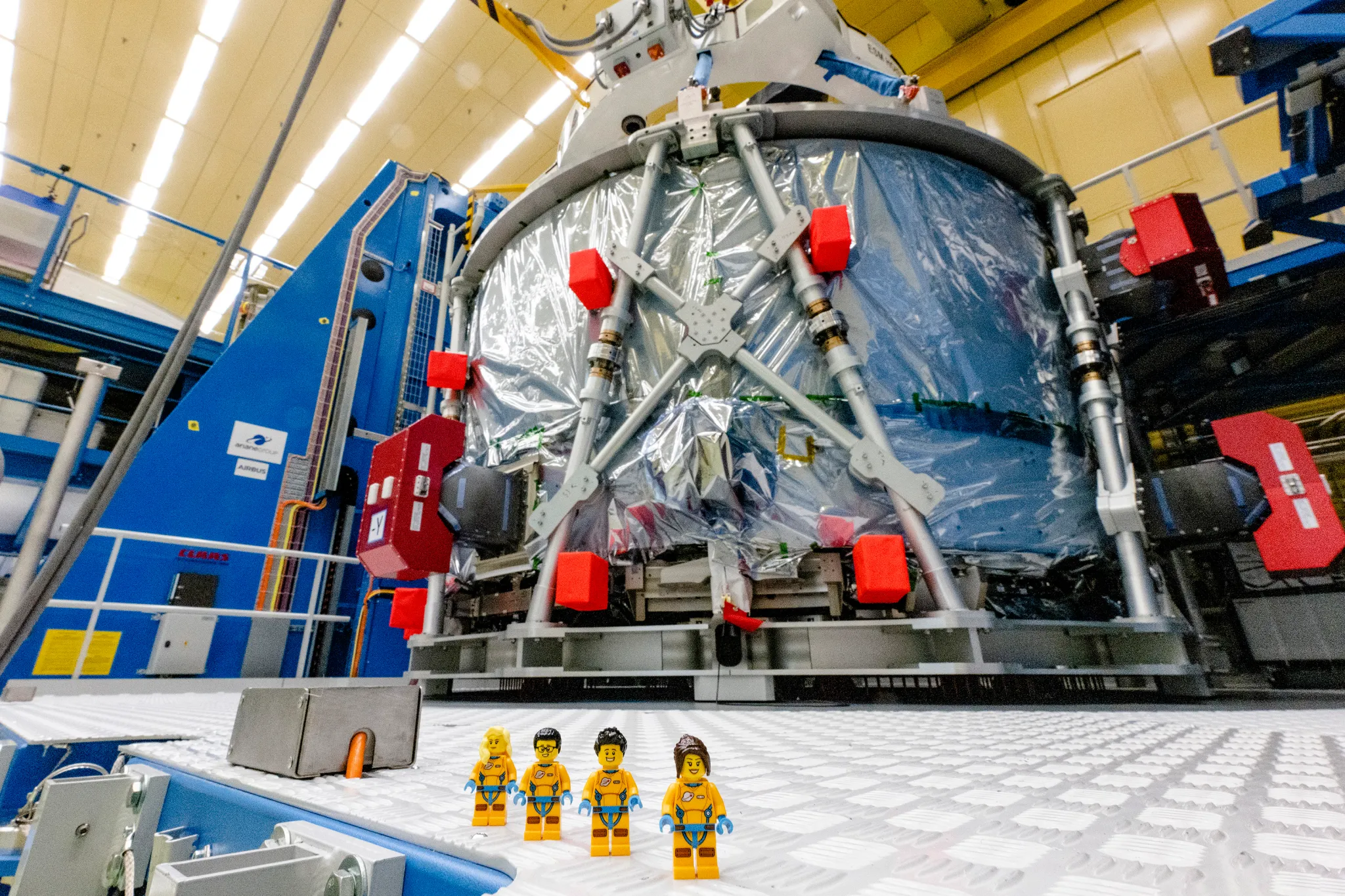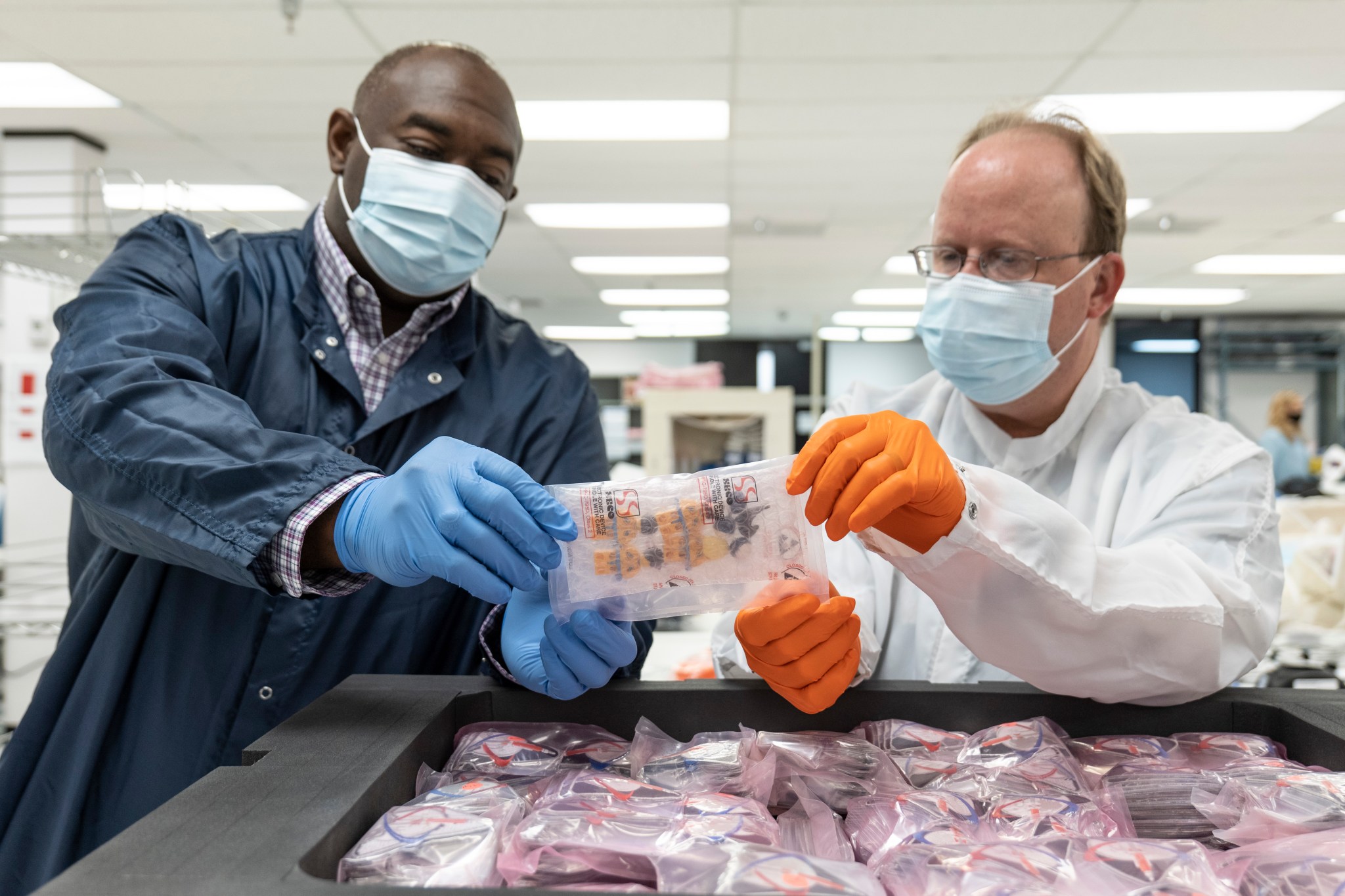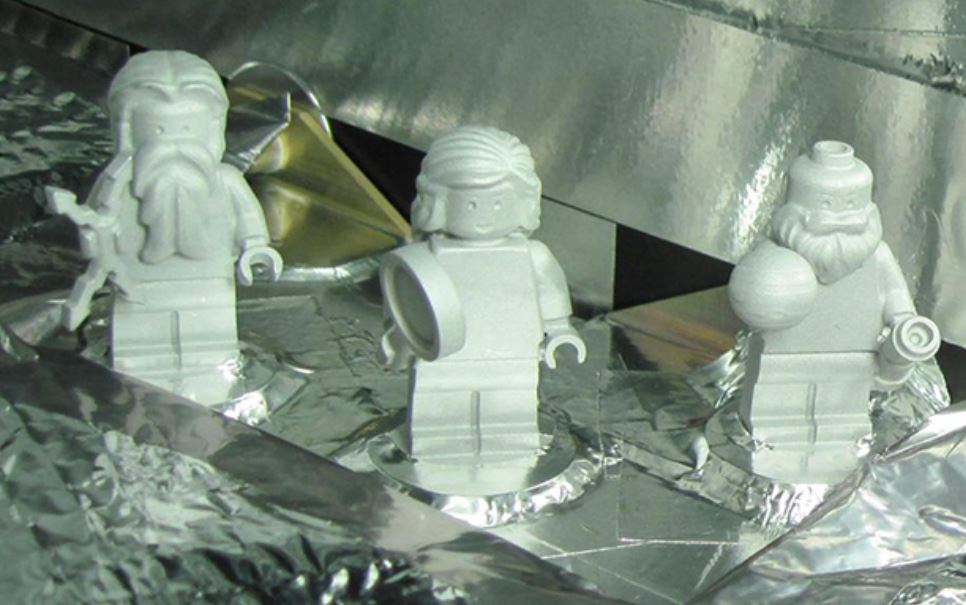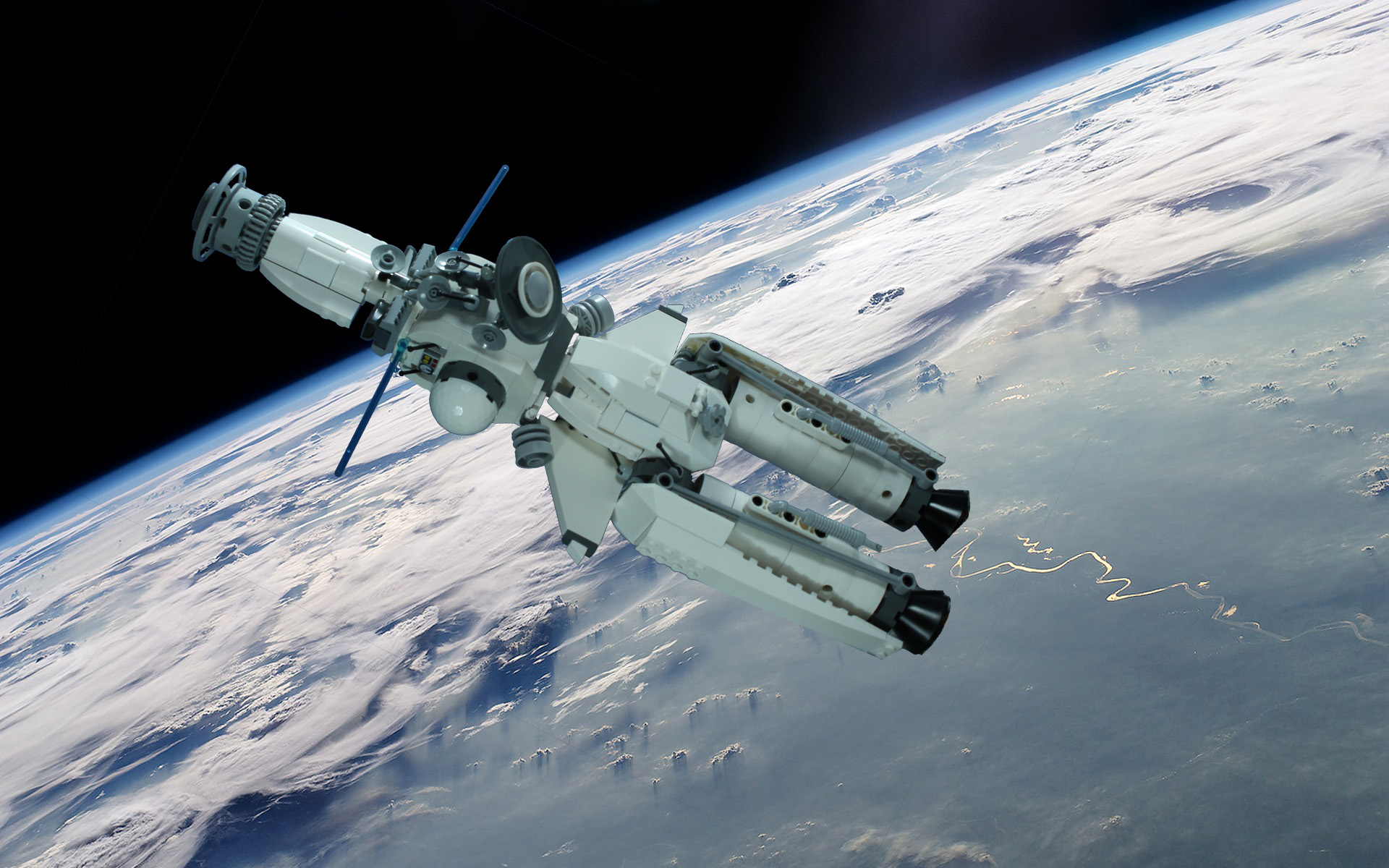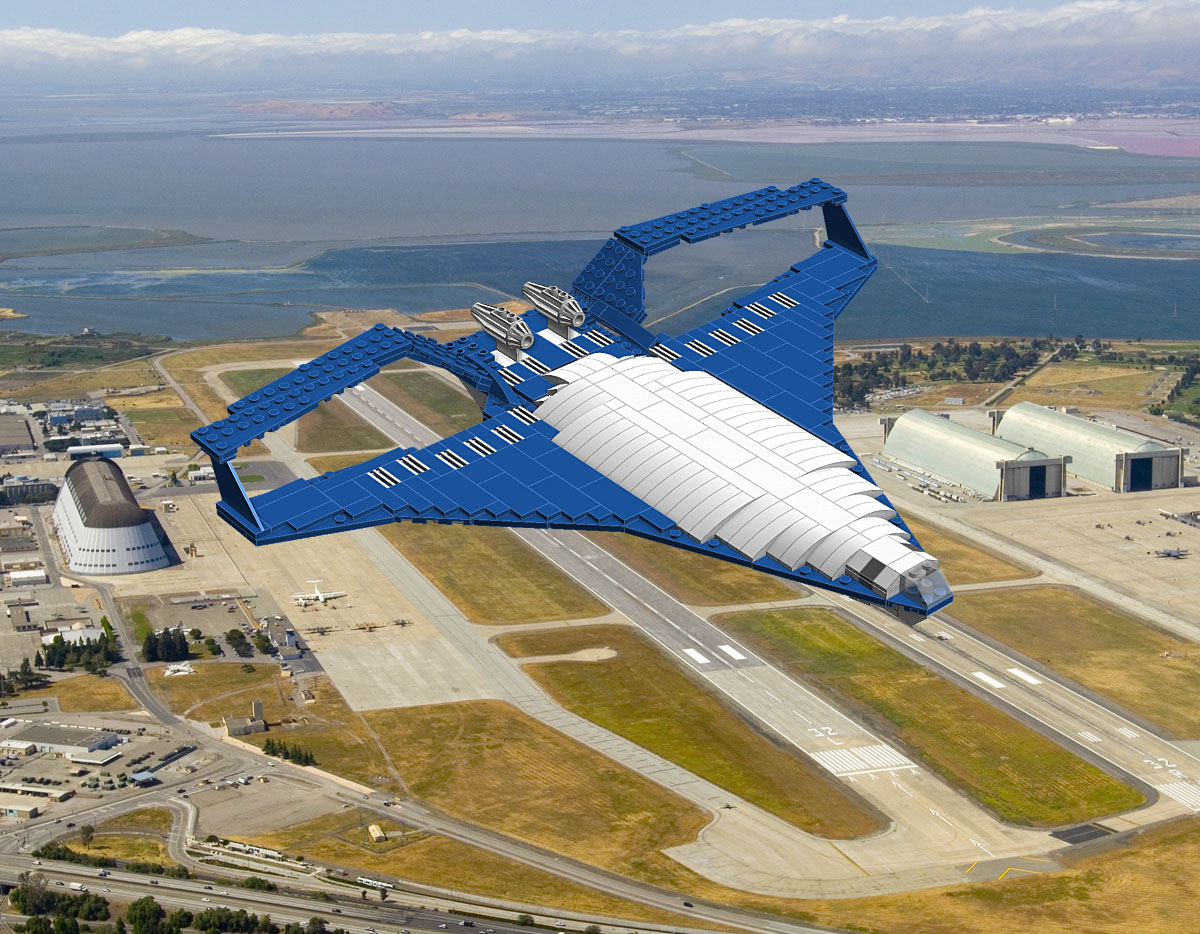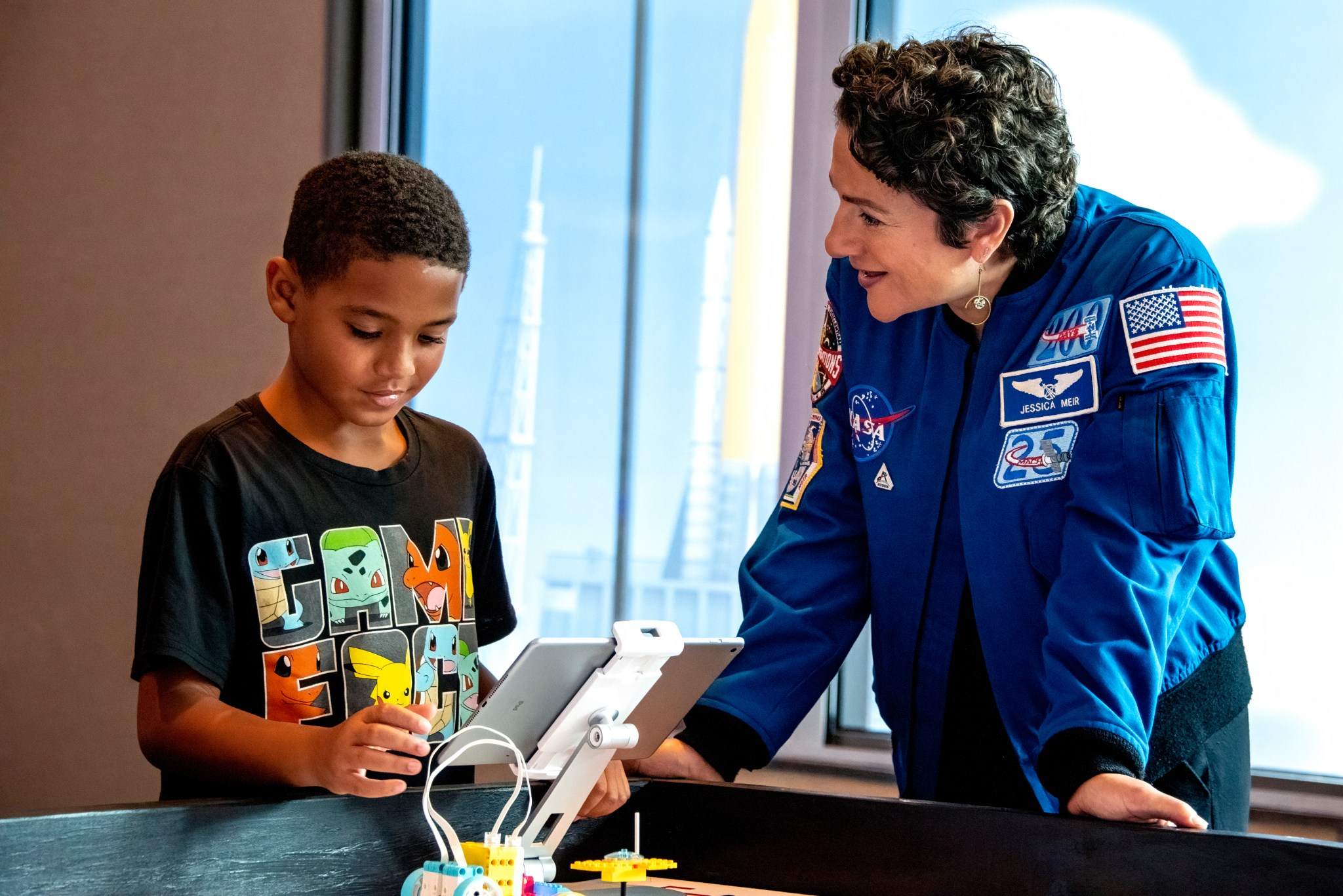NASA and the LEGO Group have a long history of collaboration on projects that engage children and adults alike to encourage interest in STEM fields and space exploration. In addition to providing inspiration for several NASA-themed sets over the past several years, NASA has recently partnered with LEGO Education to engage with thousands of educators and students through “Build to Launch,” 10-week digital learning series exploring the technology, STEM concepts and careers behind the Artemis I mission to the Moon. Four LEGO minfigures will also fly aboard Orion, packaged along with other mementos selected by the agency to fly on Artemis I, to further connect and engage kids with the educational series and highlight NASA careers.
Through open-ended lessons, students will get hands-on experience and solve problems similar to those the Artemis I team members face as they build toward launch. In addition to lesson plans and teacher guides, the series features weekly videos that introduce the LEGO Space Team and their NASA Artemis I team counterparts, helping students better understand STEM space careers and the knowledge and skills that go into completing successful space missions.
More background on the history of this collaboration follows:
1990s
NASA and the LEGO Group independently participated in the First Robotics Competition and MIT Media Lab project, kicking off years of collaboration by both NASA and the LEGO Group in FIRST robotic challenges that culminated in many space-themed robotics challenges over the years.
2002
The LEGO Group teamed with the Planetary Society and NASA’s Mars Public Engagement Program to execute a NASA contest to name the Mars Exploration Rovers. NASA selected the names “Spirit” and “Opportunity” through a student essay contest that drew nearly 10,000 entries. The LEGO Group also helped NASA to provide an opportunity to “Send Your Name to Mars” on a mini-DVD on board each of the twin rovers. Each DVD carried the names of about 4 million people to two different locations on Mars that, over the course of the rovers’ years-long journeys, would each reveal signs of ancient water, a key ingredient for life as we know it.
The LEGO Group constructed a life-size model of the NASA Mars Exploration Rover, displayed at several museums, conferences, and public events to promote the “Name the Rovers” competition and the Mars mission.
Soon after the Mars rovers got their names, NASA launched Spirit and Opportunity from Cape Canaveral Air Force Station in Florida. Each rover included construction bricks and an image of an “astrobot” (astronaut robot) brick character affixed to the spacecraft, as well as a CD with a digital list of names from the “Send Your Name to Mars” contest. Through the Planetary Society’s “Red Rover Goes to Mars” outreach effort, astrobot mini-characters named Biff Starling (on board Spirit) and Sandy Moondust (on board Opportunity) blogged about their journey to Mars during the initial stages of the mission. These mini-characters and the mini-DVD components were made from materials able to withstand the harsh Martian environment.
Based on the design information provided by NASA and the Jet Propulsion Laboratory/Caltech, the LEGO Group released the “LEGO Mars Exploration Rover” kit, which included replicas of the 2001 Mars Odyssey orbiter, one of the Mars Exploration Rovers, and the Delta II rocket and launch tower that carried both to Mars. The LEGO Group also produced a larger, more complex model of Spirit/Opportunity. Both kits were part of a licensed “Discovery Kids” theme, which sought to connect students with real rather than science-fiction space missions.
2004
The LEGO Group donated its life-sized Spirit/Opportunity rover model made of LEGO bricks to the Kennedy Space Center’s Visitors Center, where it remains on view to the public today.
2010
The LEGO Group released NASA-inspired products in their LEGO CITY line and, together with NASA, developed innovative educational STEM-related activities and products. Several of the educational LEGO sets flew on board the International Space Station (ISS), where they were assembled by astronauts on-orbit along with children and student groups across the country.
2011
The final launch of Space Shuttle Endeavor STS-134 carried a LEGO bricks payload that would later be assembled by astronauts on the ISS to demonstrate differences in how LEGOs react in zero gravity compared to LEGOs on Earth. NASA and the LEGO Group held a “Build the Future” event in advance of the Space Shuttle Endeavor STS -134 mission launch.
In August 2011, NASA launched the Juno spacecraft to Jupiter from Canaveral Air Force Station aboard an Atlas V rocket. Affixed to Juno were three miniature LEGO figures, representing Jupiter, Juno, and Galileo. NASA and the LEGO Group hosted another “Build the Future” event at the launch of the Juno spacecraft.
2012
In the spring of 2012, before NASA’s Curiosity rover successfully landed on Mars on August 6, a NASA contractor submitted a design of the Curiosity rover through the precursor to the LEGO IDEAS website, LEGO CUUSOO. In a few short months, the Curiosity model received more than 10,000 votes from fans. Through a design license with JPL/Caltech, LEGO approved the model for limited production and sale. As part of the 2013 release of the kit, the LEGO Group collaborated with NASA’s Mars Public Engagement Program on the development of an additional booklet intended to inspire learners with educational and outreach content about the Curiosity rover and its mission to seek the environmental conditions necessary for life on Mars, if any ever existed.
2013
NASA and the LEGO Group announced the “NASA’s Missions: Imagine and Build” competition to spur students of all ages to use the toy bricks to build models of future airplanes and spacecraft. The competition selected winners in two categories: (1) “Inventing our Future of Flight” and (2) “Imagine our Future Beyond Earth.” Winners were announced in September 2013.
2014
The LEGO Group released its City Space Shuttle line and Denmark’s first astronaut, Andreas Mogensen, arrived at the International Space Station carrying 26 LEGO figures specifically designed for his mission, as part of a collaboration between LEGO and the European Space Agency.
2016
NASA and the LEGO Group collaborated on an online summer activity for kids, entitled “Mission to Space.” The activity included interesting facts, games, and videos related to the ISS, Jupiter, and Mars – the three in-space locations where LEGO bricks or mini-figures had traveled.
2017
The LEGO Group released its NASA Apollo Saturn V set, an idea originally submitted by a LEGO IDEAS fan. The idea achieved 10,000 votes and was selected by LEGO for production. This set has 1,969 bricks, as a nod to the year the Saturn V rocket took Neil Armstrong, Buzz Aldrin, and Mike Collins to the Moon aboard Apollo 11 in 1969. NASA assisted the LEGO Group to ensure accuracy of this Saturn V model.
Later that year, another LEGO IDEAS submission that garnered 10,000 votes in record time was produced by LEGO. The LEGO Women of NASA featured prominent women in NASA’s history, including Sally Ride, first female astronaut to travel to space; Mae Jemison, first African American woman to fly to space; Margaret Hamilton, an Apollo software engineer; and Nancy Grace Roman, known by many inside and outside NASA as the “Mother of Hubble.”
2018
LEGO CITY and LEGO CREATOR approached NASA with projects focusing on celebrating the 50th anniversary of Apollo 11, as well as a line of space-themed sets inspired by NASA programs. NASA collaborated with LEGO CITY to provide access to information, images, facilities, and NASA careers, inspiring sets to help kids imagine a future in space through play.
2019
NASA and the LEGO Group celebrated the 50th anniversary of the Apollo program and NASA’s next giant leap with NASA-inspired sets and related public engagement activities aimed at inspiring the next generation to continue to dream about traveling to the Moon and Mars. This collaboration included the LEGO Group’s participation in the National Air & Space Museum’s Apollo 50 Festival, a free three-day event on the National Mall in Washington, DC. The LEGO Group joined the celebration with a large build activity to inspire kids and families to dream about our shared future in space. The event encompassed multiple exhibits from NASA focusing on the agency’s Artemis lunar exploration missions.
NASA collaborated with LEGO in a Moon to Mars online build challenge in 2019, and as part of its 10th Anniversary of LEGO Ideas, LEGO asked the public to vote among several previous set designs that garnered 10,000 LEGO fan votes but had not previously been selected for production. Fans voted for an International Space Station (ISS) set design, which was later produced by LEGO Ideas during 20th anniversary year of continuous human presence on the ISS.
2021
NASA worked with LEGO City to help translate the excitement of the Mars Perseverance landing and Ingenuity helicopter test to thousands of kids through a LEGO City News segment that included facts about Mars and celebrated the successful rover landing and helicopter test.
NASA’s ongoing partnership with LEGO for the Build to Launch educational series, build challenges and events, and support for NASA-inspired content represents an example of a multi-faceted partnership to share information, build excitement and inspire the next generation to be interested in STEM careers and our shared future in space.























